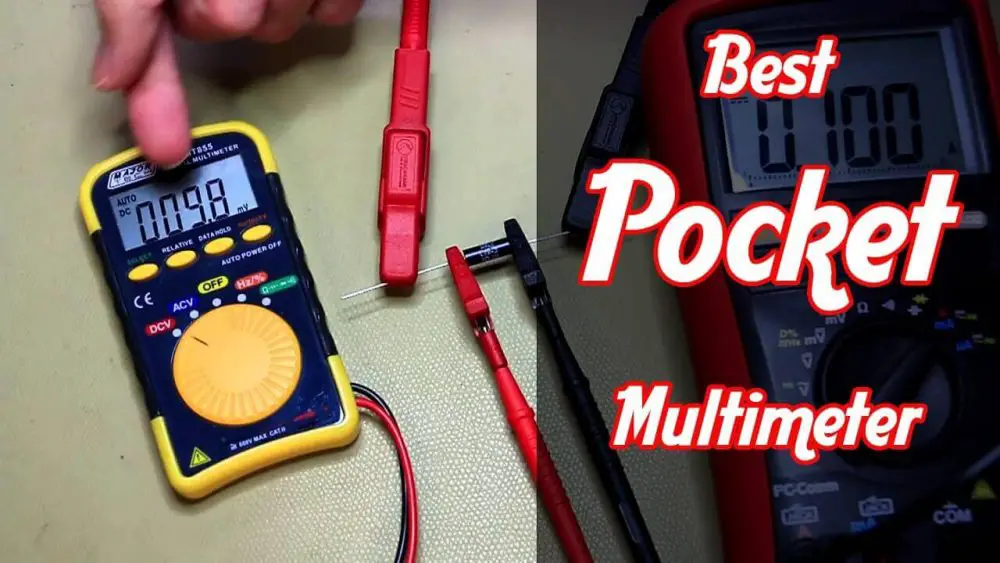How To Test Audio Signal With Multimeter?
When working with audio signals, it’s essential to be able to test them with a multimeter to ensure that they are functioning correctly. There are a few different ways to do this, but the most basic method is to connect the leads of the multimeter to the positive and negative terminals of the audio signal. Then, if the signal is strong enough, you should see a reading on the multimeter’s display.
If you don’t see a reading, or if the reading is very weak, it could indicate a problem with the audio signal. In this case, you’ll need to troubleshoot the issue to determine what is causing the problem.
One thing to keep in mind when testing audio signals with a multimeter is that real-world signals are usually AC, not DC. You’ll need to use the AC setting on your multimeter to get an accurate reading. Otherwise, you may see a flat line on the display instead of the signal waveform.

Step-by-step instructions for using a multimeter to test an audio signal:
A multimeter is a device that can measure multiple electrical properties of a circuit, including voltage, current, and resistance. The multimeter can also be used to test for continuity in a circuit.
There are two main types of multimeters: analog and digital. Analog multimeters use a needle and dial to display readings, while digital multimeters display readings on an LCD or LED screen.
- Connect the multimeter to the audio source.
- Set the multimeter to measure AC voltage.
- Adjust the multimeter’s sensitivity until you get a reading on display.
- Note the reading and disconnect the multimeter from the audio source.
- Reconnect the multimeter to the audio signal’s ground (GND) side and make another note of the reading. This is your reference voltage.
- Calculate the peak-to-peak voltage by subtracting the reference voltage from the first reading you took (Step 4). This will give you an idea of how the audio signal is strong.
- Finally, disconnect the multimeter from the audio source and ground (GND), and you’re done!
How is the audio signal voltage measured?
The voltage of an audio signal is measured using a technique known as AC coupling. A capacitor is used to connect the two leads of a voltmeter. The capacitor prevents any DC voltage from being present, allowing only the AC voltage of the audio signal to be measured. Audio signals can be measured in a variety of ways. An ohmmeter is the most commonly used tool for measuring audio signal voltage. There are, however, other methods for measuring audio signal voltage. Some audio meters, for example, use microphones to determine the sound pressure level (SPL). Audio meters that use SPL measurements are generally more accurate than those that measure voltage.
How do you test audio wires?
When testing audio wires, the most important thing is to make sure there is no signal loss or degradation. This can be done by using a multimeter to measure the wire’s resistance or a continuity tester to look for broken wires. If there is any signal loss or degradation, the audio wire might need to be changed. It is also important to make sure that the audio wire is well insulated. If the insulation is broken, a short circuit could happen, which could damage the equipment. To check the insulation, you can measure the resistance of the wire with an insulation tester.
If the resistance is less than 1 megohm, the insulation is probably broken and should be replaced. Lastly, it’s important to make sure none of the connections is loose. Signal loss or degradation can happen when connections are loose, so it is important to make sure that all connections are tight and secure. Check for broken connections with a continuity tester and make sure all connections are tight and secure before using the equipment.
Check the wiring of your test equipment to ensure that your audio testing is correct. To ensure that your audio test equipment’s wiring is properly configured, follow these steps:
- Examine the wires for obvious damage. If the wire is damaged, such as fraying or exposed insulation, it should be replaced.
- Examine how the wires are connected to the equipment. Check that the connections are tight and free of rust.
- Check the wires with a multimeter to see if they are still connected. Set the multimeter to “ohms” and place a probe at each end of the wire. The reading should be close to zero if the wire is in good condition.
- Check the wiring by using a balanced audio cable and measuring the resistance between the two “hot” wires. The resistance between each hot wire and the ground wire should be the same.
- Connect the equipment to a power source and test the audio signal by playing a test tone through the system. Check for any distortion in the sound and use your multimeter to ensure that the levels are within the proper range.
If you follow these steps, your audio testing equipment will be properly wired and ready to provide accurate results.
Frequently Asked Questions:
The output voltage is the difference in potential between an audio amplifier’s two output terminals. This voltage is usually measured in volts (V) and corresponds to the signal’s strength after it has been amplified. The output voltage of an audio amplifier is usually much higher than the input voltage. This allows the amplifier to increase the signal’s power. The output voltage of an audio amplifier is determined by the type of amplifier, the gain, and the load resistance.
The gain of an amplifier is defined as the ratio of the voltage coming out to the voltage going in. For example, if an amplifier has a gain of 10, it will output 10 volts for every volt applied to the input terminal. The load resistance is the resistance of the thing connected to the amplifier’s output. The amount of current that flows through the amplifier is determined by the amount of resistance. Several factors, including the input signal, gain, and load resistance, can affect the voltage output of an audio amplifier. To get the best sound out of an amplifier, you must understand how these variables affect the output voltage.
If you are not sure if your amplifier is working right, you can do a few things to make sure it is. First, make sure that the amplifier is properly plugged into an electrical outlet and that all of the cables are securely connected. Then, please turn on the amplifier and play some music to see how loud it is. If the sound is muffled or distorted, it could mean that the amplifier is broken.
Using a multimeter to measure the voltage at the speaker outputs, you can figure out how much power the amplifier puts out. Set the multimeter to read DC volts and connect the positive lead to one of the speaker terminals while the amplifier is on. The negative lead should be connected to the amplifier’s ground terminal or a metal part of the chassis. The voltage that the multimeter shows should be close to the power that the amplifier puts out. If you’re still not sure if the amplifier is working right, you should bring it to a professional audio technician for more testing.
There are a few big signs that an amplifier isn’t working right. The first thing you might notice is that the sound coming out of your speakers isn’t as good as usual. The sound could have static or crackling, or it could be distorted. Also, the volume might be lower or not as even as usual. If you think your amplifier is broken, you can confirm it by doing the following:
1. Check that all the connections are tight and secure.
2. Try a different set of speakers with the amplifier to see if the problem is still there.
3. You should have a professional look at your amplifier and figure out what’s wrong.
If your amplifier breaks, you have to decide whether to fix it or buy a new one. Sometimes, all it takes to get your amplifier back up and running is a simple fix. But if the damage is bad enough, it may be cheaper to just buy a new amplifier. No matter what you decide, make sure to take care of any problems with the amplifier as soon as possible. If you don’t, you could hurt your speakers or other audio gear.
Conclusion:
There are several ways to use a multimeter to test audio signals. The most common way is to use the AC voltage setting on the multimeter. Then, connect the leads of the multimeter to the speaker terminals and make sure there is continuity. If the sound keeps going, there is an audio signal. An oscilloscope is another way to test sound signals. This will show you a picture of what the audio signal looks like. Lastly, you can measure the strength of the audio signal with a sound level meter. No matter which method you use, make sure the multimeter is set to the right settings before you take measurements.




